History of the Nursery
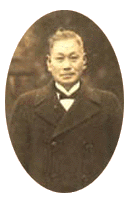 Founder of Shiseigakusha
Founder of Shiseigakusha
Kyuichiro Inenaga
(1882~1946)
Shiseigakusha Social Welfare Foundation, which is the parent organization of the Nursery, was founded as an organization for protection of juveniles following the establishment of the Juvenile Law in 1925, by Kyuichiro Inenaga, who in 1912 along with his confectionary business took under his care several unfortunate juveniles, guided by the principle of “True Heart.”
In 1942 through personal donations the organization was transformed into a foundation. After the War, following the revision of legislation, the organization was once again changed into a social welfare foundation and its activities shifted in the welfare area, accordingly. Since then the Foundation has been engaged in managing nursery centers, homes for dependent children, homes for the elderly and other facilities in Tachikawa, Hino, and Hoya City, each of them contributing to the improvement of welfare services in the respective areas.
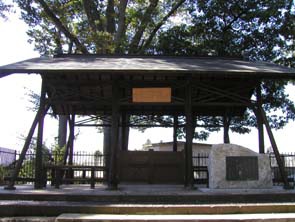 Goho -rensha and monument of
Goho -rensha and monument of
“Makoto-no-kokoro”
The Nursery, established by Yoshi Inenaga, second board chairperson of the Foundation, was certified by the Tokyo Metropolitan Government on December 1, 1949. Presently, as a facility with capacity of 120 children, it offers services that respond to the needs of the age, such as nursery care for infants from the 57days since birth and the end of the maternity leave, extended nursery care (7:00~20:00), nursery care for disabled children, emergency temporary nursing care, and child rearing support programs (Nonna no ouchi Nonna’s Home). After the Foundation split up in FY1998, the Shiseigakusha Tachikawa Social Welfare Foundation was established and together with Sayuri Hoikuen (Sayuri Day Nursery), a sister nursery of the Nursery formed a Headquarters of Nonna General Program, which aims at “creating facilities that are rooted in the local communities,” and mobilizes the efforts of all its staffs for turning its nurseries into even better places for personality formation for the children of the 21st Century
Jun. 1912 Kyuichiro Inenaga starts a program for protection of juveniles
Dec. 1949 Establishment of the Nursery
Apr. 1986 After a large-scale improvement, the Nursery is turned into the present facility with capacity of 120 children
Number of Children
(In reality, however, errors are possible depending on the different number of request in each year, so the table above provides just rough estimates)
| Infants | 1-year old children | 2-year old children | 3-year old children | 4-year old children | 5-year old children |
| 18 | 20 | 20 | 20 | 21 | 21 |
| Total 120 | |||||
Structure of Staff
| Nursery Director | 1 |
| Nursery teachers | 20 |
| Cooks | 4 |
| Medical nurse | 1 |
| pediatrician | 2 |
Nursery Care Services
Nursery care after the maternity leave end
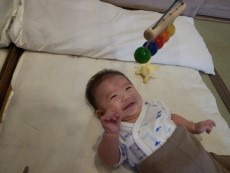 we accept infants from the 57days after their birth
we accept infants from the 57days after their birth
11-hour nursery care
Extended nursery care
Nursery care for children with disabilities
Emergency temporary nursery care
Programs for promoting acceptance throughout the year
Creation of a day nursery that is open to the local community
Child rearing support programs Nonna no ouchi (Nonna’s Home)
Child rearing circle, where mothers can share their concerns over child rearing, and where parents’ reassurance contributes to children’s happiness.
The circle offers a variety of pleasant experiences
» Nonna no ouchi (Nonna’s Home)
Summer festival and bazaar
Objectives of Nursery Care
- Bright, healthy, active, and independent children
- Caring, cooperative and social children, who can live in harmony with other people
- Children who are rich in creativity and are able to devote their time and effort to exploration
Nursery Care Groups
| Shine, Chick Nido | Bunny, Squirrel IC | Apricot-tree, Zelkova-tree Primary |
||
| From 57days to around a year and a half-old infants |
From around a year and a half to 3-years oldchildren |
From 3-years old to preschool age children |
Nido (infants aged 0 mainly)
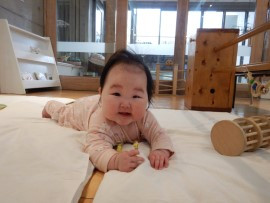
“Nido” is an Italian word, which means “nest”.
It represents a very important period in the life of the chick, when it needs a lot of protective care and support under its mother’s wing.
We have set various corners in order to preserve the daily individual rhythm of eating, sleeping, and physical activities. Here infants spend the important period until they are weaned and start walking.
Infants are divided into two groups by age
●Chick room (room for up to year and a half old infants, who have mastered crawling and have started to pull themselves up and walk on their own)
Infant Community (IC mainly 1-to-2-year old children)
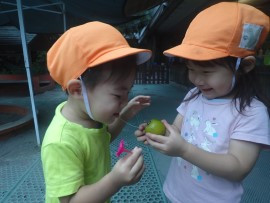
This is a group for children from around a year and a half to 3-years old,
who can already walk and move around freely. For this group we adopt the multiage nursery care based on the Montessori Method.
Children at this age are eager for imitative activity and the group aims to establish basic independent skills such as dressing and undressing,
eating, and excreting on their own. The group is divided in two rooms? the Bunny room and the Squirrel room (each room for children from a year and a half to 3-years old).
Primary (mainly 3-to-5 year old children)
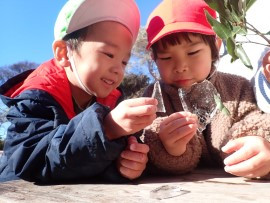
As children grow up, communication with other children from different age groups becomes an increasingly important matter.
Because we place priority on the opportunity for the children to learn about each other, we adopt the multiage nursery care for this group, which is based on the Montessori Method.
Under this method children of different age groups are raised in the same environment, where younger children adoringly imitate and follow older children.
as kindness, caring, and leadership.
This cultivates sociability and cooperative spirit in children, which is a very important achievement, especially nowadays, when few children have brothers and sisters.
Furthermore, as children enter a period when their intellectual desire grows, we have created an environment with various teaching materials that children can use freely.
This group is divided in two rooms ? the Apricot-tree room and the Zelkova-tree room (each room for children from 3-years old to preschool age).
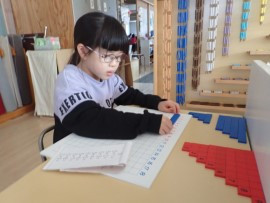
Four Core Pillars of Nursery Care
Individual activities
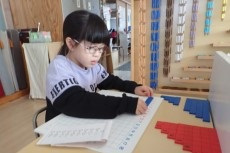
Our educational system respects the individual pace of each child starting from the infants and places a high priority on their individuality.
We always ask children “What do you want to do?” (giving priority to their will) and tell them “Let’s help you so that you can do it on your own.” (developing inner speech capacity and self esteem in children).
Thus we attach great importance on the development of their individuality.
In the nursery we consider this period of their growth as the most important in terms of personality formation and apply the method for a given time every day after they arrive at the Nursery.
Group activities
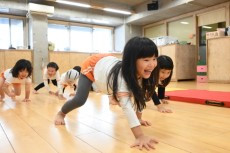
Four-to-five years is the age in particular when children start developing group consciousness.
We provide them with opportunities to experience activities where children think for themselves what to do and how to act accordingly, to learn how to control themselves in a group, or to compete with one another and to help each other to achieve one goal.
Outdoor activities
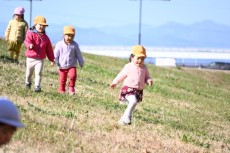
Every day children enjoy playing and walking in the nursery garden.
They taste various fruits grown in the rich natural environment, learn the delight of participating in the process of growing fruits harvesting them, and then tasting them, and develop sense of gratitude toward nature.
These activities contribute also to rearing strong and healthy children.
Practical Life activities
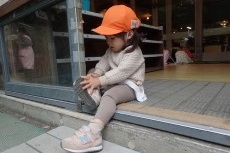
Children spend more time in the nursery than at home.
It is important that they learn some life skills It is also important to that they become aware that they are responsible for their own life.
Furthermore, children should learn that through doing things by themselves they can be of help to other people.
We think that all fundamental living skills should be acquired through everyday-life activities.
Map
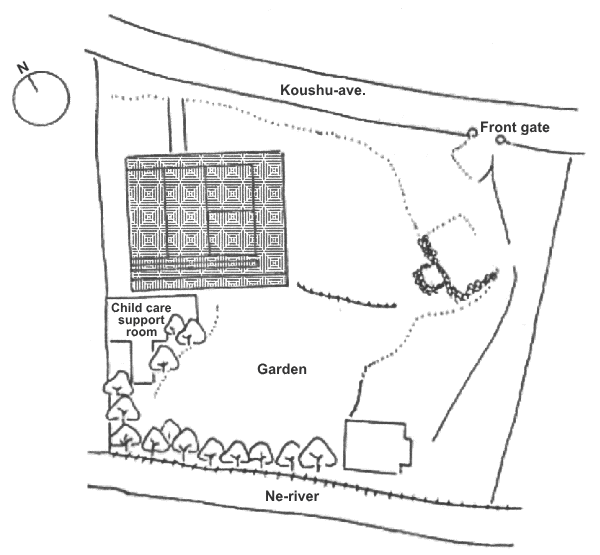
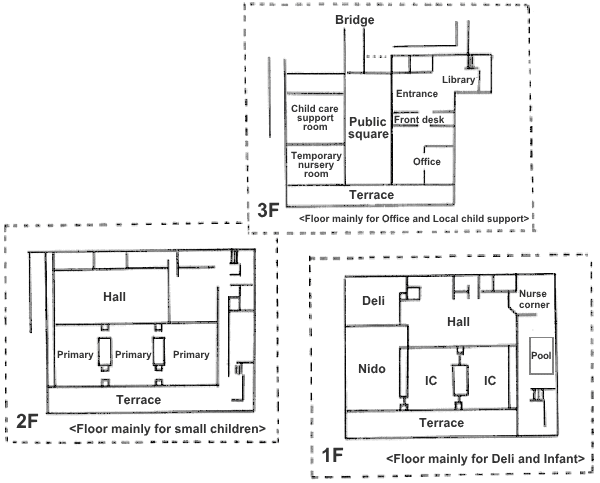
| Site Area | 4280.57m² |
|---|---|
| Building Area | 1680.51m² (1F 718.62m² / 2F 493.01m² / 3F 468.88m²) |
| Outdoor Playground | 1092m² |

